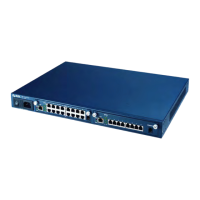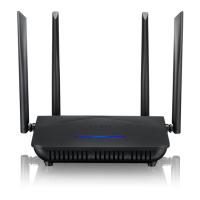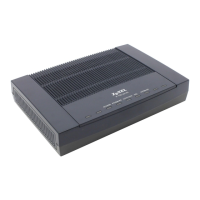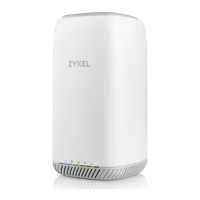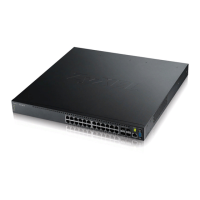IES-2000/3000 User’s Guide
Bridge Commands 10-5
Member Ports =
The ports that belong to this multicast group. 1= Ethernet, 2= DSL port 1,
3=DSL port 2 and so on.
IGMP version =
The version of IGMP being used in the network.
Query Received =
The number of query packets received by the line card.
Max Response Time =
The longest period of time used to respond to a query packet, measured in
tenths of a second.
Query Interval =
The time period between query packets.
10.5.3 Filterage Command
Syntax:
192.168.1.1 bridge> filterage [age]
where
age =
Aging out timer period in seconds.
This command sets or shows the aging out timer period of the filtering database. It is recommended that you
use the default setting. If the time interval is set too short, it could increase broadcast traffic and reduce the
available bandwidth.
10.5.4 Flush Command
Syntax:
192.168.1.1 bridge> flush [port]
where
port =
A bridge port number
This command flushes out the filtering database of the specified bridge port. If the <port>
field is omitted,
this command will flush out the filtering databases of all ports.
10.5.5 Info Command
Syntax:
192.168.1.1 bridge> info
This command shows the software number of the bridge implementation and the maximum size of the filtering
database.
10.6 Port-Based VLAN Commands
The VLAN (Virtual Local Area Network) mechanism can be used to limit the broadcast domain to the members
of a VLAN group only. In this way, VLAN increases network performance by limiting broadcasts to a smaller and
more manageable logical broadcast domain. In traditional switched environments, all broadcast frames go to each
and every individual port.

